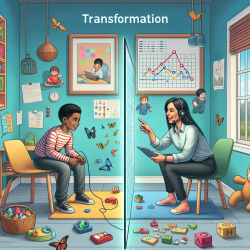Understanding Hallucinations: Insights from Active Inference
As a speech-language pathologist, understanding the underlying mechanisms of hallucinations can significantly enhance therapeutic approaches, especially for children who may experience atypical sensory perceptions. A recent study titled Hallucinations both in and out of context: An active inference account provides valuable insights into the computational mechanisms behind hallucinations, offering a fresh perspective that can be applied in clinical settings.
Key Findings from the Research
The study uses a model of hallucinations based on active inference, which posits that hallucinations occur when there is an imbalance between sensory information and prior beliefs. The research distinguishes between in-context hallucinations, which align with environmental cues, and out-of-context hallucinations, which do not. This distinction is crucial for understanding the spectrum of hallucinatory experiences, from benign occurrences in healthy individuals to more severe manifestations in conditions like schizophrenia.
Applying Research Insights in Practice
For practitioners, these findings underscore the importance of considering the role of sensory information and prior beliefs in therapeutic interventions. Here are some practical steps to integrate these insights:
- Assess Sensory Processing: Evaluate how children process sensory information and identify any discrepancies between their perceptions and reality.
- Modify Environmental Contexts: Create supportive environments that reinforce accurate sensory perceptions, helping to ground children in reality.
- Develop Cognitive Strategies: Teach children strategies to question and reassess their perceptions, fostering a more balanced integration of sensory information and beliefs.
Encouraging Further Research
While the study provides a robust framework for understanding hallucinations, it also highlights the need for further research. Practitioners are encouraged to explore how these mechanisms can be tailored to individual needs, particularly in pediatric populations. Collaborative research efforts can lead to more nuanced interventions that address the unique challenges faced by children experiencing hallucinations.
Conclusion
By leveraging the insights from this research, speech-language pathologists can enhance their practice, leading to improved outcomes for children. Understanding the balance between sensory information and prior beliefs is key to addressing hallucinations effectively.
To read the original research paper, please follow this link: Hallucinations both in and out of context: An active inference account.










